Historical Sites
-
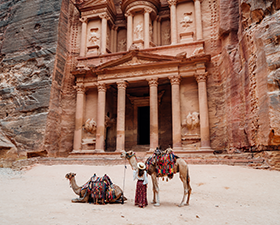
Petra
-
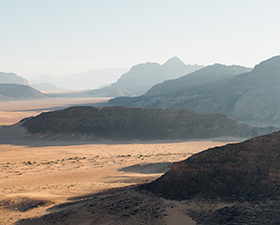
Wadi Rum
-
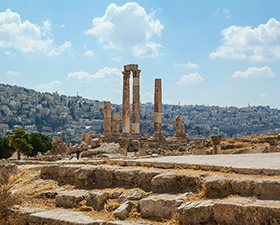
Amman
-

The Dead Sea
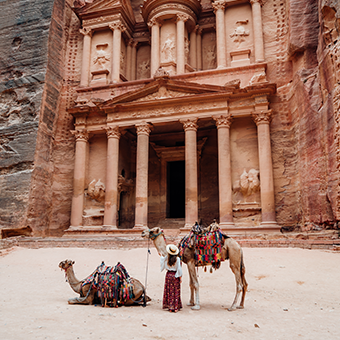
Petra
The ancient city of Petra is one of Jordan's national treasures and by far its best known tourist attraction. Located approximately three hours south of Amman, Petra is the legacy of the Nabataeans, an industrious Arab people who settled in southern Jordan more than 2,000 years ago. Admired then for its refined culture, massive architecture and ingenious complex of dams and water channels, Petra is now a UNESCO World Heritage Site that enchants visitors from all corners of the globe. Much of Petra's appeal comes from its spectacular setting deep inside a narrow desert gorge. The site is accessed by walking through a kilometre long chasm (or Siq), the walls of which soar 200m upwards.
Wadi Rum
"The Valley of the Moon”, depicted as Mars in several Hollywood feature films Wadi Rum is an Arabian fairy-tale waiting to be discovered. Home to nomadic Bedouin tribes, Wadi Rum is a a quiet getaway of stars, sand, and sun; a perfect complement from Amman’s epicenter.
Discover more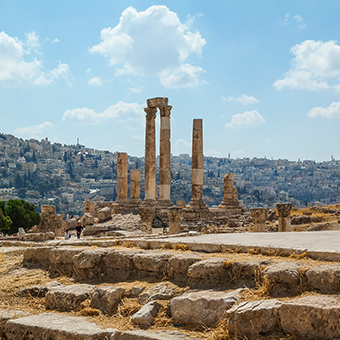
Amman
A sprawling city spread over 19 hills, Amman is the modern - as well as the ancient - capital of the Hashemite Kingdom of Jordan. Known as Rabbath-Ammon during the Iron Age and later as Philadelphia, the ancient city that was once part of the Decapolis league, now boasts a population of around 4 million people. Amman, often referred to as the white city due to its low size canvas of stone houses, offers a variety of historical sites. There are a number of renovations and excavations taking place that have revealed remains from the Neolithic period, as well as from the Hellenistic and late Roman to Arab Islamic Ages. The site which is known as the Citadel includes many structures, such as the Temple of Hercules, the Umayyad Palace and the Byzantine Church. At the foot of the Citadel lies the 6,000 seat Roman Theatre, which is a deep-sided bowl carved into the hill and is still being used for cultural events. Another newly restored theatre is the 500-seat Odeon that is used for concerts. The three museums found in the area offer a glimpse of history and culture; they are the Jordan Archaeological Museum, The Folklore Museum and the Museum of Popular Traditions.
Discover moreThe Dead Sea
A spectacular natural wonder, the Dead Sea, located 427 meters below sea level, is perfect for wellness tourism and family fun in the sun. The leading attraction at the Dead Sea is the warm, soothing, super salty water itself – some ten times saltier than sea water, and rich in chloride salts of magnesium, sodium, potassium, bromine, and several others. Additionally, the atmospheric oxygen concentration at the Dead Sea is higher than in most other places on Earth, contributing to its health benefits.
Discover more
Stargazing in Jordan
Under Jordan’s vast desert skies, stargazing offers an awe-inspiring experience with some of the clearest views of constellations, planets, and the Milky Way. Wadi Rum, known for its pristine, light-pollution-free environment, provides a perfect setting for observing the cosmos. Guided by local Bedouins, visitors can connect ancient stories to the stars while immersing themselves in the desert's tranquil beauty. Additionally, the Dana Biosphere Reserve, with its elevated landscapes and remote location, offers excellent stargazing conditions, where meteor showers and deep-sky objects come into view. Whether through an overnight camp or a telescope-guided tour, Jordan’s desert and wilderness promise an unforgettable cosmic journey.

Bird Watching in Jordan
Jordan is an exceptional destination for birdwatching enthusiasts, positioned at the crossroads of Europe, Asia, and Africa. This unique location makes it a crucial migratory corridor, attracting bird species from various regions. With 436 recorded species, Jordan’s diverse landscapes provide unparalleled opportunities to observe rare and migratory birds in their natural habitats. The Azraq Wetland Reserve serves as a vital stopover for herons, eagles, and the elusive hoopoe lark, while the Dana Biosphere Reserve offers breathtaking views of griffon vultures soaring above rugged cliffs. Whether exploring the lush forests of Ajloun or the serene waters of Aqaba, Jordan’s rich biodiversity makes it a hidden gem for birdwatchers.
-

Dana & Feynan
-
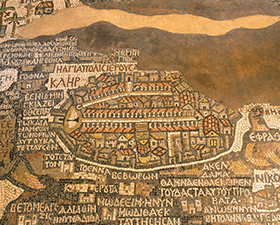
Madaba
-

Jerash
-
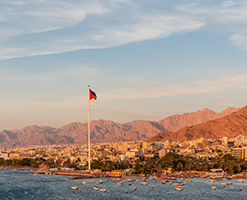
Aqaba
Dana & Feynan
Dana Biosphere Reserve is an area of staggering beauty, history, and biodiversity. The only reserve in Jordan that encompasses the four different bio-geographical zones of the country (Mediterranean, Irano-Turanian, Saharo-Arabian and Sudanian
Discover more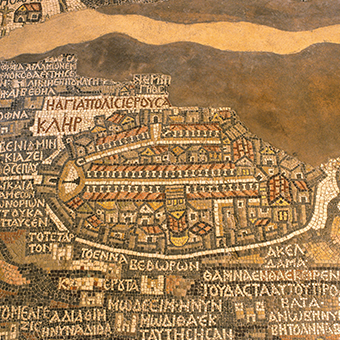
Madaba
The trip south from Amman along the 5,000-year-old Kings Highway is one of the most memorable journeys in the Holy Land, passing through a string of ancient sites. The first city to encounter is Madaba, "the City of Mosaics." The city, best known for its spectacular Byzantine and Umayyad mosaics, is home to the famous 6th century mosaic map of Jerusalem and the Holy Land. With two million pieces of colored stone, the map depicts hills and valleys, villages and towns as far as the Nile Delta. Other mosaic masterpieces found in the Church of the Virgin and the Apostles and the Archaeological Museum, depict a rampant profusion of flowers and plants, birds and fish, animals and exotic beasts, as well as scenes from mythology and everyday pursuits of hunting, fishing and farming.
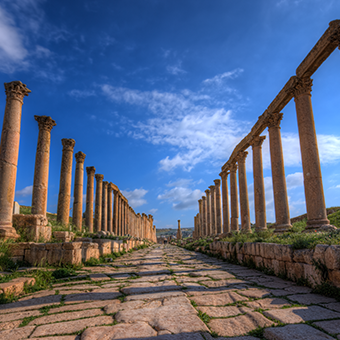
Jerash
A close second to Petra on the list of favorite destinations in Jordan, the ancient city of Jerash boasts an unbroken chain of human occupation dating back more than 6,500 years. The city's golden age came under Roman rule and the site is now generally acknowledged to be one of the best-preserved Roman provincial towns in the world. Hidden for centuries in sand before being excavated and restored over the past 70 years, Jerash reveals a fine example of the grand, formal provincial Roman urbanism that is found throughout the Middle East, comprising paved and colonnaded streets, soaring hilltop temples, grand theatres, spacious public squares and plazas, baths, fountains and city walls pierced by towers and gates. Beneath its external Graeco-Roman veneer, Jerash also preserves a subtle blend of east and west. Its architecture, religion and languages reflect a process by which two powerful cultures meshed and coexisted - The Graeco-Roman world of the Mediterranean basin and the ancient traditions of the Arab Orient.
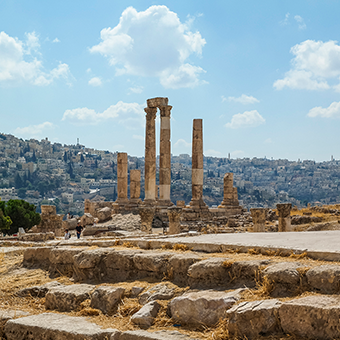
Aqaba
With its wealth of other attractions, Jordan's splendid Red Sea resort is often overlooked by modern-day visitors. But apart from being a delightful place for discerning holidaymakers, this is actually a great base from which to explore various places of interest in southern Jordan.

Stargazing in Jordan
Under Jordan’s vast desert skies, stargazing offers an awe-inspiring experience with some of the clearest views of constellations, planets, and the Milky Way. Wadi Rum, known for its pristine, light-pollution-free environment, provides a perfect setting for observing the cosmos. Guided by local Bedouins, visitors can connect ancient stories to the stars while immersing themselves in the desert's tranquil beauty. Additionally, the Dana Biosphere Reserve, with its elevated landscapes and remote location, offers excellent stargazing conditions, where meteor showers and deep-sky objects come into view. Whether through an overnight camp or a telescope-guided tour, Jordan’s desert and wilderness promise an unforgettable cosmic journey.

Bird Watching in Jordan
Jordan is an exceptional destination for birdwatching enthusiasts, positioned at the crossroads of Europe, Asia, and Africa. This unique location makes it a crucial migratory corridor, attracting bird species from various regions. With 436 recorded species, Jordan’s diverse landscapes provide unparalleled opportunities to observe rare and migratory birds in their natural habitats. The Azraq Wetland Reserve serves as a vital stopover for herons, eagles, and the elusive hoopoe lark, while the Dana Biosphere Reserve offers breathtaking views of griffon vultures soaring above rugged cliffs. Whether exploring the lush forests of Ajloun or the serene waters of Aqaba, Jordan’s rich biodiversity makes it a hidden gem for birdwatchers.
-
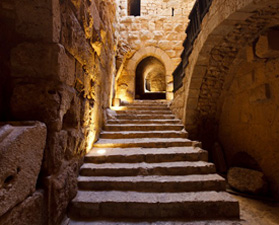
Ajloun
-
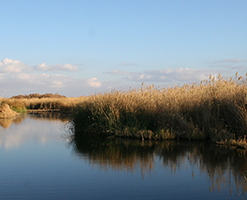
Zarqa
-
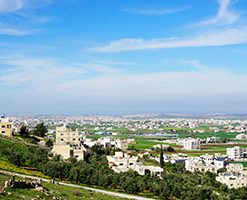
Irbid
-
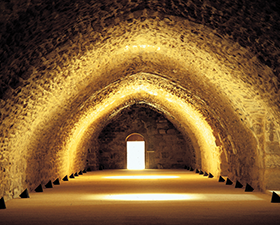
Karak
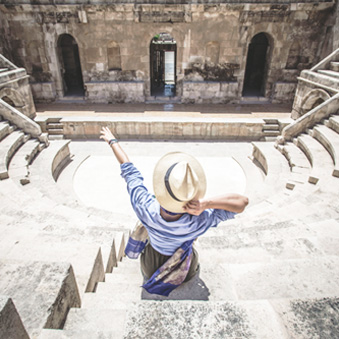
Ajloun
The marvels of nature and the genius of medieval Arab military architecture have given northern Jordan two of the most important ecological and historical attractions in the Middle East: the sprawling pine forests of the Ajloun-Dibbine area, and the towering Ayyubid castle at Ajloun, which helped to defeat the Crusaders eight centuries ago. Ajloun Castle (Qal'at Ar-Rabad) was built by one of Saladin's generals in 1184 AD to control the iron mines of Ajloun,
Zarqa
Zarqa is a Jordanian city and the capital of the Zarqa Governorate, which is nearly 20 km northeast of the capital city of Amman. Zarqa is the third largest city in terms of population, with a population of about 572,290 in 2013, and is considered the industrial capital of Jordan. There are many locations not to be missed in Zarqa including a wildlife reserve, a wetland reserve and several castles.
Irbid
Located in the north of Jordan with the second largest population in the kingdom, Irbid is a mix of authentic Arabian society with flashes of western influence. Boasting panoramic views of the West Bank and ancient architectures from the Roman era, Irbid tells a tale of its own.
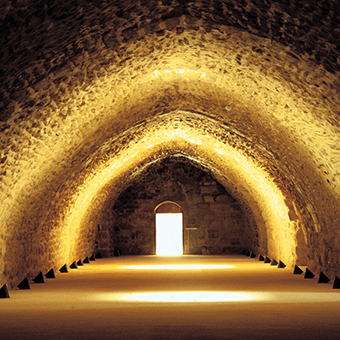
Karak
The fort itself is a dark maze of stone-vaulted halls and endless passageways. The best-preserved are underground, and to be reached through a massive door (ask at the ticket office). The castle in itself is more imposing than beautiful, though it is all the more impressive as an example of the Crusaders' architectural military genius.

Stargazing in Jordan
Under Jordan’s vast desert skies, stargazing offers an awe-inspiring experience with some of the clearest views of constellations, planets, and the Milky Way. Wadi Rum, known for its pristine, light-pollution-free environment, provides a perfect setting for observing the cosmos. Guided by local Bedouins, visitors can connect ancient stories to the stars while immersing themselves in the desert's tranquil beauty. Additionally, the Dana Biosphere Reserve, with its elevated landscapes and remote location, offers excellent stargazing conditions, where meteor showers and deep-sky objects come into view. Whether through an overnight camp or a telescope-guided tour, Jordan’s desert and wilderness promise an unforgettable cosmic journey.

Bird Watching in Jordan
Jordan is an exceptional destination for birdwatching enthusiasts, positioned at the crossroads of Europe, Asia, and Africa. This unique location makes it a crucial migratory corridor, attracting bird species from various regions. With 436 recorded species, Jordan’s diverse landscapes provide unparalleled opportunities to observe rare and migratory birds in their natural habitats. The Azraq Wetland Reserve serves as a vital stopover for herons, eagles, and the elusive hoopoe lark, while the Dana Biosphere Reserve offers breathtaking views of griffon vultures soaring above rugged cliffs. Whether exploring the lush forests of Ajloun or the serene waters of Aqaba, Jordan’s rich biodiversity makes it a hidden gem for birdwatchers.
-
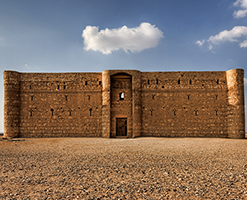
Desert Castles
-
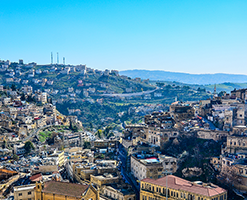
As-Salt
-

Umm al Jimal
-
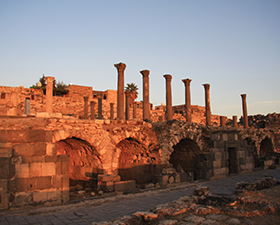
Umm Qais
Desert Castles
Jordan's desert castles, beautiful examples of both early Islamic art and architecture, stand testament to a fascinating era in the country's rich history. Their fine mosaics, frescoes, stone and stucco carvings and illustrations, inspired by the best in Persian and Graeco-Roman traditions, tell countless stories of the life as it was during the 8th century.
Discover moreAs-Salt
As-Salt is a thriving city situated North West of the capital Amman. Built on three main mountains (the cadital, gadaa and salalem), surrounded by the city square, As-Salt is enclosed by breathtaking views and is a wonderful contrast to some of the westernized sites of Amman, thanks to its good water supply and agricultural land it had been settled at least since the Iron Age. It has been identified with Roman Gadaron; and in the Byzantine period it had its own bishop.
Discover more
Umm al Jimal
Umm al Jimal is considered an Arabian Oasis for the desert caravans. It is 86km away from the capital, Amman, and it is well known as "the Black Oasis", as it contains a large number of black volcanic rocks. History of this city goes back to the Romanian Byzantine Age.
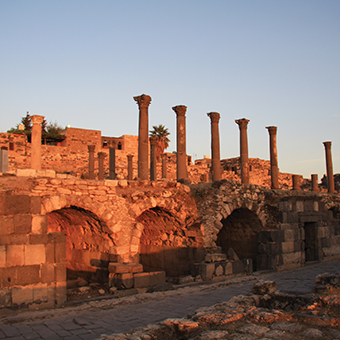
Umm Qais
Perched on a splendid hilltop overlooking the Jordan Valley and the Sea of Galilee, Umm Qais boasts impressive ancient remains, such as the stunning black basalt theatre, the basilica and adjacent courtyard strewn with nicely carved black sarcophagi, the colonnaded main street and a side street lined with shops, an underground mausoleum, two baths, a nymphaeum, a city gate and the faint outlines of what was once a massive hippodrome.

Stargazing in Jordan
Under Jordan’s vast desert skies, stargazing offers an awe-inspiring experience with some of the clearest views of constellations, planets, and the Milky Way. Wadi Rum, known for its pristine, light-pollution-free environment, provides a perfect setting for observing the cosmos. Guided by local Bedouins, visitors can connect ancient stories to the stars while immersing themselves in the desert's tranquil beauty. Additionally, the Dana Biosphere Reserve, with its elevated landscapes and remote location, offers excellent stargazing conditions, where meteor showers and deep-sky objects come into view. Whether through an overnight camp or a telescope-guided tour, Jordan’s desert and wilderness promise an unforgettable cosmic journey.

Bird Watching in Jordan
Jordan is an exceptional destination for birdwatching enthusiasts, positioned at the crossroads of Europe, Asia, and Africa. This unique location makes it a crucial migratory corridor, attracting bird species from various regions. With 436 recorded species, Jordan’s diverse landscapes provide unparalleled opportunities to observe rare and migratory birds in their natural habitats. The Azraq Wetland Reserve serves as a vital stopover for herons, eagles, and the elusive hoopoe lark, while the Dana Biosphere Reserve offers breathtaking views of griffon vultures soaring above rugged cliffs. Whether exploring the lush forests of Ajloun or the serene waters of Aqaba, Jordan’s rich biodiversity makes it a hidden gem for birdwatchers.

